Learn how to make your own marinated olives including great tips for picking the right olive oil to use. This post is sponsored by Pompeian.
I am seriously in love with the olive bar at one of my local grocery stores. I drool every time I walk past it. What I’m not in love with is how much they cost over there. The smallest container can end up being $4-5 if you stuff it full. Which you know I do because I love snacking on them. I decided to save some money and marinate some olives at home and it’s actually really easy and fun to do.
Scroll down to read more about how it all comes together or click here to jump straight down to the recipe.
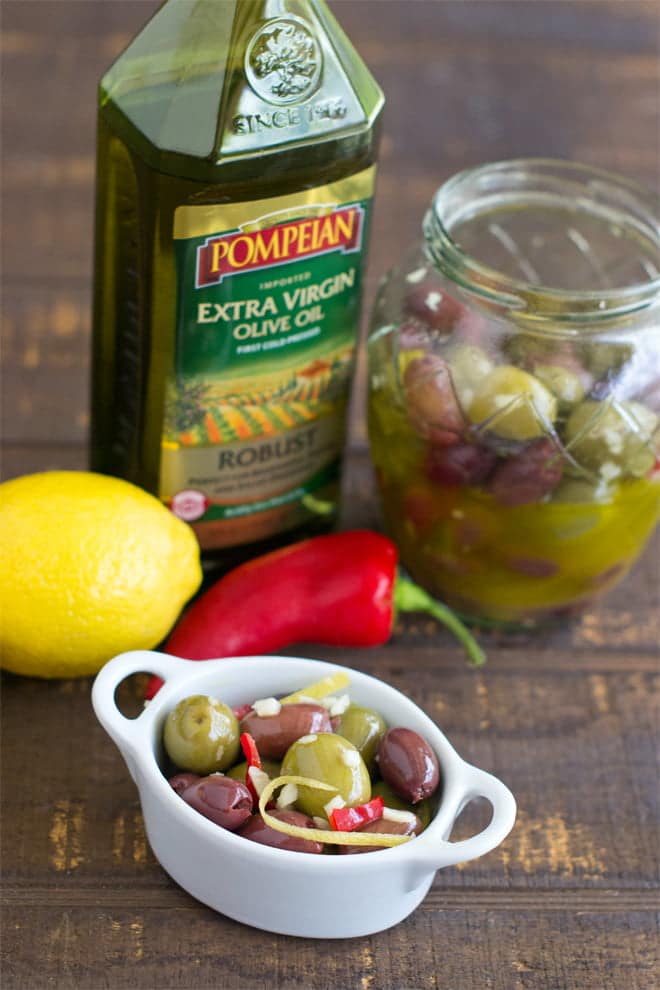
What Kind Of Olives Should I Marinate?
You can buy any kind of olives that you like! Serious Eats has a great guide to olive varieties if you’re not sure which ones are for you.
I tend to go for inexpensive kalamata olives and those big green queen olives. I prefer to get pitted ones. The reason is simply that everyone feels a bit rude having to spit out pits so why make anyone do it? But the ones with the pit are fine too if that’s what you like, just something to keep in mind.
Flavoring Marinated Olives
Next you go in with flavoring ingredients for your marinade. I’ve got a recipe for you below that uses lots of chopped garlic, sliced Thai red chilies, and strips of lemon zest. It’s pretty amazing, but you can absolutely customize to your taste.
You can instead go in with fresh herbs, like parsley, fresh thyme, oregano, and fennel seeds. Or try lots of crushed coriander seeds, some black pepper, and lemon rind. If you like just a kick of heat, try adding in some red pepper flakes.
OK, now the most important part. The olive oil. You’re going to use quite a bit here so you don’t want to go to the gourmet shop and splurge like crazy. And yet, it’s important to choose a good-tasting quality olive oil. Go to your regular grocery store but try to find a nice quality oil with good flavor and not too much bitterness.
How To Marinate Olives
Now you have all your ingredients, what do you do?
Put the olives and flavorings in a large jar. Drizzle with olive oil. You don’t need the olives fully submerged here. I go about halfway. Put the lid on the jar and give it a good shake.
Put the jar in the fridge for 2 hours and up to two weeks, it just gets better as it sits in all that delicious flavored oil. Shake it daily to mix those seasonings around.
An important thing to note, the olive oil is going to harden in the fridge. No worries. Put the jar on the counter and let it come to room temperature and give a good stir before serving.
Serving Homemade Marinated Olives
To serve, spoon out the olives along with the flavorings and some olive oil. They are great to snack on by themselves, but some of my favorite ways to enjoy these olives are on a cheese or charcuterie board. They will be a welcome addition to any appetizer station and they also make a lovely hostess gift.
More Briny Recipes
If you love olives, you’ll love my Kalamata Olive Tapenade recipe and my Tomato Tapenade recipe too. I’ll also say that one of my favorite things to have with olives is feta cheese, so, if you’re like me and adore these two things, then I know you’ll love my recipe for this Whipped Feta Dip, for this Feta Pasta Bake, and for these Greek Stuffed Peppers which have both!
Enjoy! – Christine xo
Print
Marinated Olives Recipe
- Prep Time: 10 minutes
- Refrigerate: 2 hours
- Cook Time: 0 minutes
- Total Time: 10 minutes
- Yield: 6–8 servings 1x
- Category: Appetizer
- Method: Mix
- Cuisine: American
DESCRIPTION
No more busting your wallet at the olive bar. Learn how to make your own marinated olives!
Ingredients
- 1/2 of a lemon
- 4 cloves garlic, minced
- 1/2 Thai red chili, seeded and sliced thinly
- 12 oz. pitted mixed olives (e.g., Kalamata and queen thrown Spanish olives)
- 1/2 cup olive oil
Instructions
- Remove the zest from the lemon and cut the zest into thin strips. Juice the lemon. Put the lemon zest and juice along with the garlic, chili, and olives into a large jar. Add the olive oil. Shake to coat.
- Refrigerate for 2 hours or up to two weeks shaking daily to mix everything up.
- Take the jar of olives out of the fridge 1 hour before serving so that the olive oil melts into a liquid.
- Transfer the olives to a bowl for serving using a spoon to scoop out olives, taking along some of the olive oil and flavorings.
Love this recipe? I’d appreciate it if you could scroll down and add a *5 star rating* to help others know they’ll love it as well!
This post originally appeared in September 2016 and was revised and republished in July 2023.


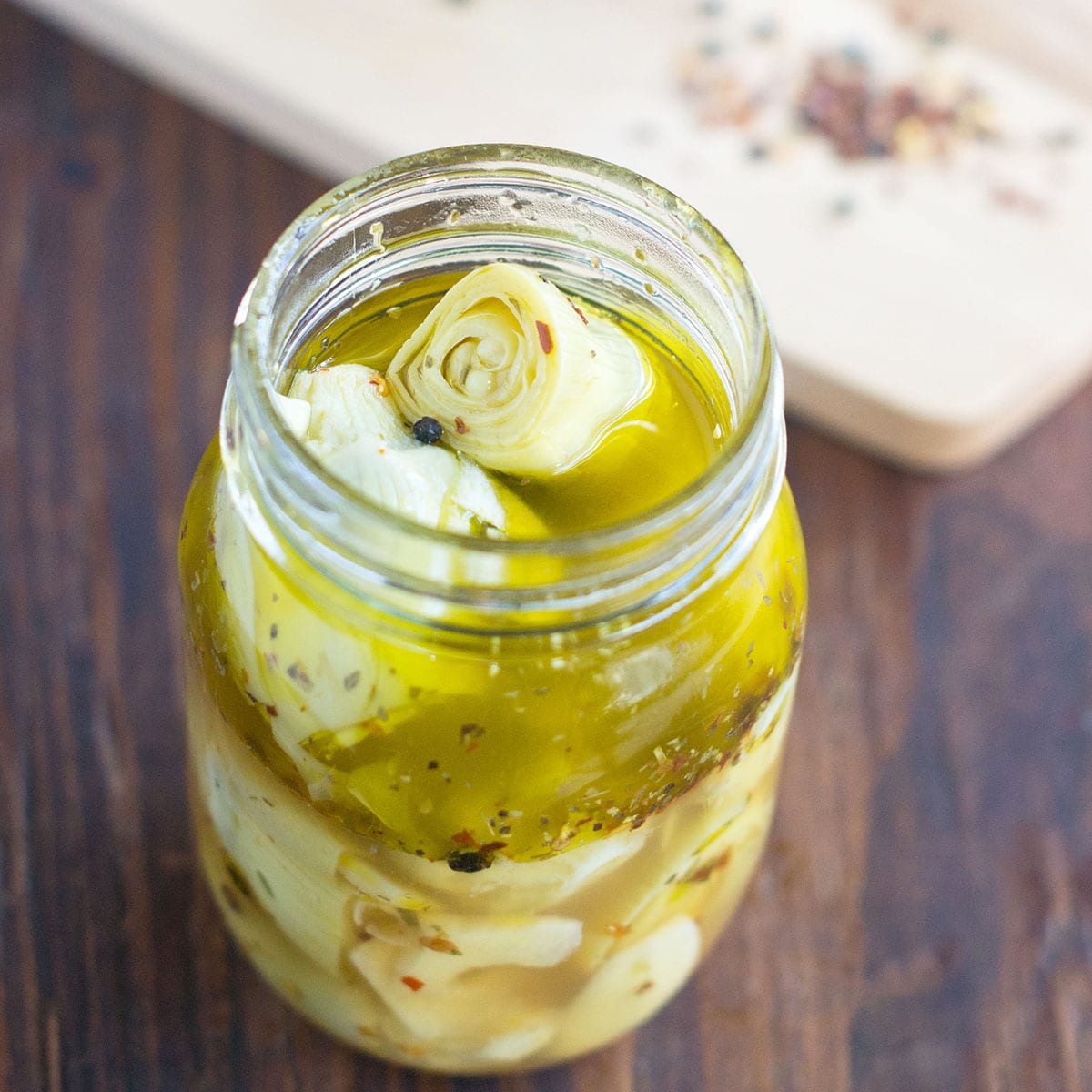
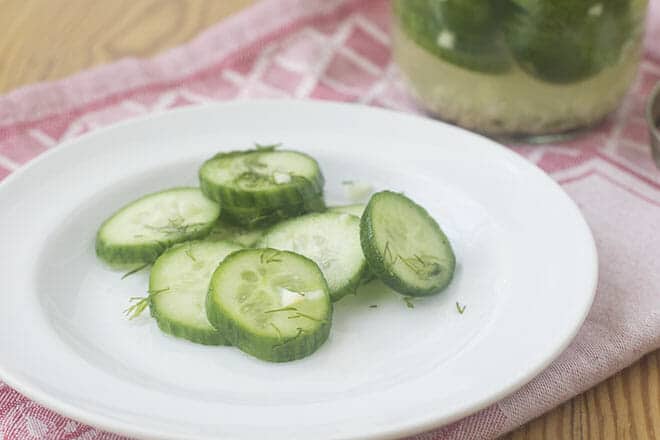
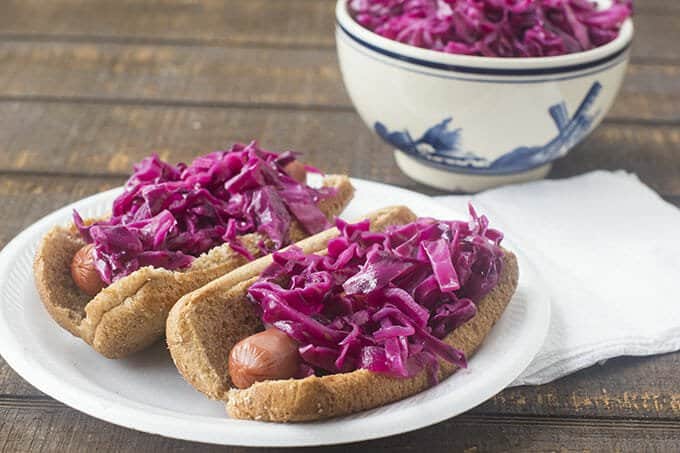
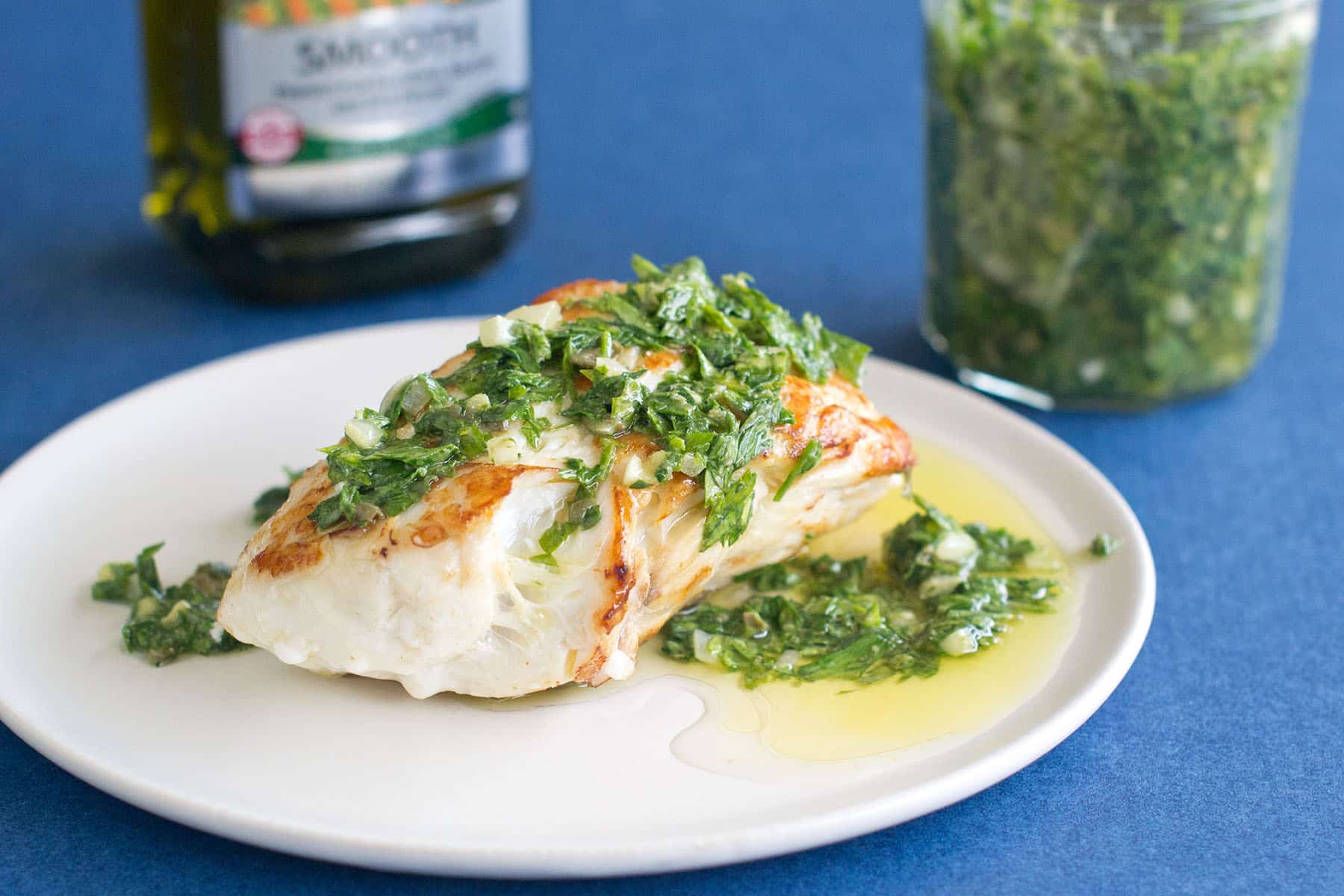



















Leave a Reply